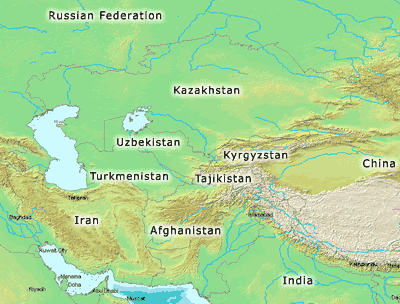|
 The major Western markets are under pressure of low prices and the competition is
very hard. Farmers’ investments decrease. The major Western markets are under pressure of low prices and the competition is
very hard. Farmers’ investments decrease.
After the development of the
Chinese and Indian markets, but with limitation of trade and
intellectual property protection, could the “old USSR” - the new CIE
- be a
new place for development?
New markets are being created in
this agricultural area with new investments.
Yes, we have to look to the east;
something is going on there. Everyone knows about the
agricultural potential of the great plains of Ukraine. What is
less known is the potential of Central Asia: Kazakhstan,
Kyrgyzstan, Uzbekistan and Tajikistan - 20 million ha of arable land.
During the time of the Soviet Union, this was the seed warehouse
of the USSR and a garden for the production of vegetables and
fruits.
A few years ago,
some of us took a
chance and risked the "adventure". But those were dangerous times: crops
grown under contract disappeared on the day of
harvest, genetic resources were "hijacked", and we were surprised to
learn that Moldavia was the leading country for the “creation of
varieties”.
 Recently,
things changed.
Some of these countries have become members of the WTO,
started enforcing intellectual property protection laws, and
have become UPOV members - or are in the application process. The
seed laws are being updated and have started to
be enforced. National catalogues are being set up. Certification
and, therefore, control systems are reappearing. Neighbouring
countries are discussing the advantages of creating common
catalogues and harmonised certification systems so that seed
can circulate freely. Recently,
things changed.
Some of these countries have become members of the WTO,
started enforcing intellectual property protection laws, and
have become UPOV members - or are in the application process. The
seed laws are being updated and have started to
be enforced. National catalogues are being set up. Certification
and, therefore, control systems are reappearing. Neighbouring
countries are discussing the advantages of creating common
catalogues and harmonised certification systems so that seed
can circulate freely.
It is important to be
aware that a debate is currently going on in these countries (for example in Russia)
regarding the best model for a seed master plan: the American
system - no registration, no catalogue, no certification - or the
European one - fully regulated.
My personal vision is that there is no real need
for catalogues or certification for vegetables. However, when it
comes to
open-pollinated plants, catalogues and certification allow for a
better dynamism in the market and the varietal creation, and a
real protection of plant breeders’ rights.
Between these two groups, there are a lot
of species upon which the debate remains open.
For the companies who try to develop their
activities in the Central Asian countries, this type of choice is not
trivial.
Are the new political situations,
like the “orange revolution” in Ukraine and, more recently, the
"tulip revolution” in Kyrgyzstan, signs of a political
renaissance that will allow the existing potential of the
countries in the Confederation of Independent States to develop?
I think so.
And even farther east lie India and China, where
there are no longer any questions about development, where growth is
extraordinarily dynamic, and where the presence of new investors is already being
felt. |